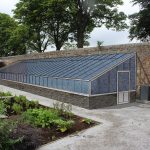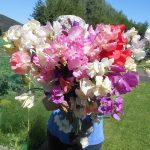Tales from the Garden – Late July at Redcroft
The belle of the ball at the moment is this Rhododendron which has produced a lavish amount of flowers rather nicely laid out in layers when other rhodos are a distant memory. It is R.auriculatum, the product of a propagating exercise by RBGE students, and one of many very young plants handed out to those who attended the Friends’ Rhododendrons workshop in 1998. Such late flowerers are inclined to be spoilt by drought so I have been watering it to try and preserve the perfection of the flowers, and feeding it in the hope that the leaves will become a little less yellow
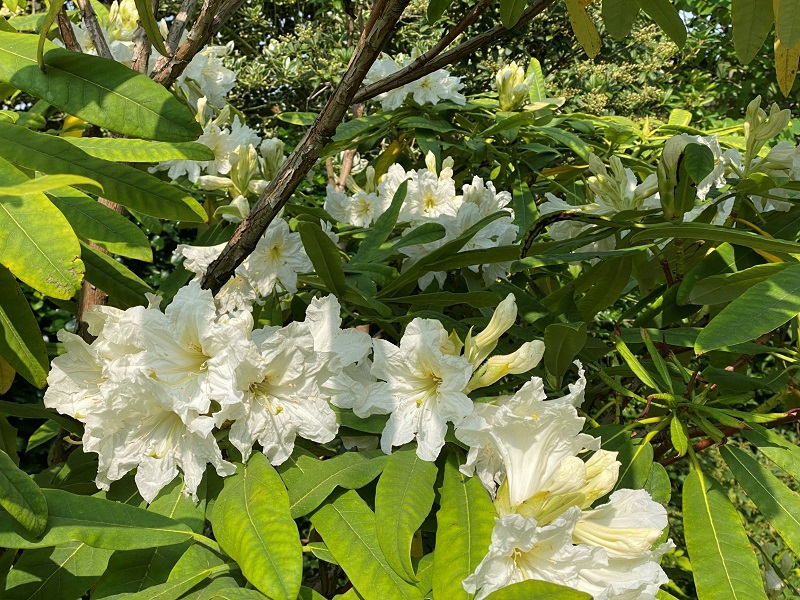
Also performing in an unusually generous way has been this Schizophragma hydrangeoides which hangs over the road wall. I hope passers- by have noticed it for when it is sunny it is covered in bumble bees. We also have the pink version in a shadier spot on the east side of the house. They are very tall self- clinging climbers with similar habit to Hydrangea petiolaris and seem happy in either sun or shade and not fussy at all about the quality of the soil.
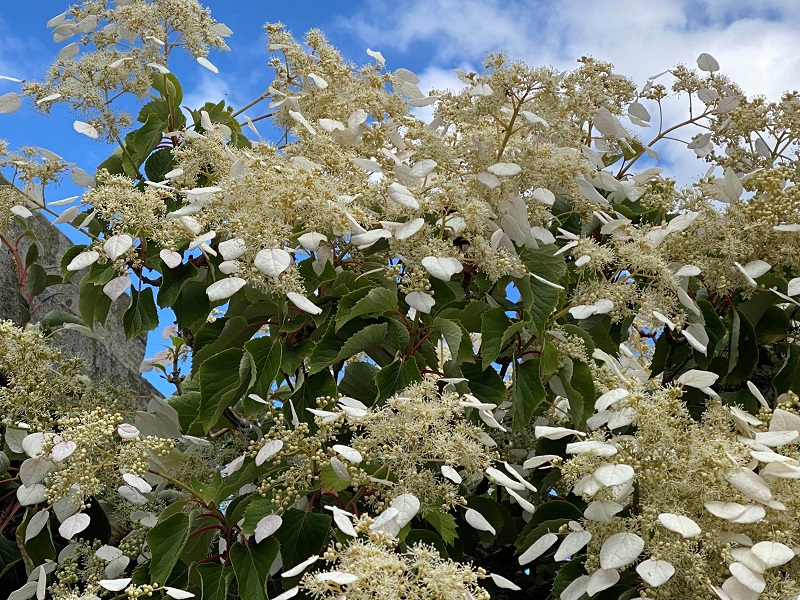
Fuchsia arborescens is so called because it can grow to tree like proportions. This one has been kept in a pot all its life so hasn’t got too tall. This Fuchsia originates from mountain cloud forest in South America and here it is not hardy. It lives in the greenhouse in winter and looked very unhappy earlier on. It recovered well and has a good crop of these vivid flowers and presides over a jumble of a bed with Ammi major, Lychnis, and a bright green Fuchsia relative, providing a nice colour match with the purple allium.
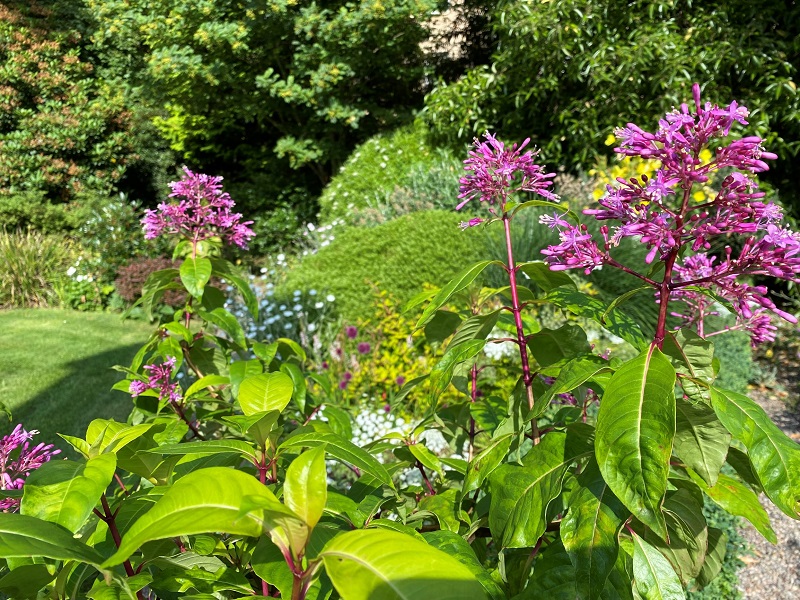
Eucomis bicolor, seen here posing for the photo, also lives in a pot, and is in the greenhouse in winter. It is divided and refreshed only every three or four years. This year it has arranged itself in a perfect shape and I like the architectural quality, but you can’t get away from the fact that as the flowers grow older they emit a rather unpleasant odour. At that point I have to move it further away from the entrance.
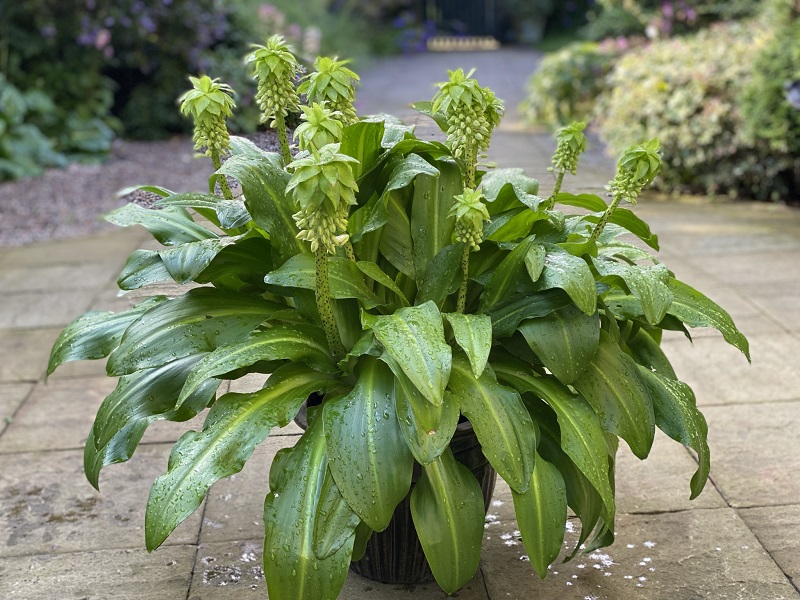
E.H.M. Cox in his Gardener’s Chap Book published in 1931 includes Morina longifolia, shown here, amongst ‘Forgotten Plants’. It is not widely planted even today but it is worth a place like this, self-seeding in the gravel and choosing where it wants to go, although Cox recommends it as a front of border plant. It has these attractive flowers and they make lovely seed heads, but its leaves and stems are horribly prickly.
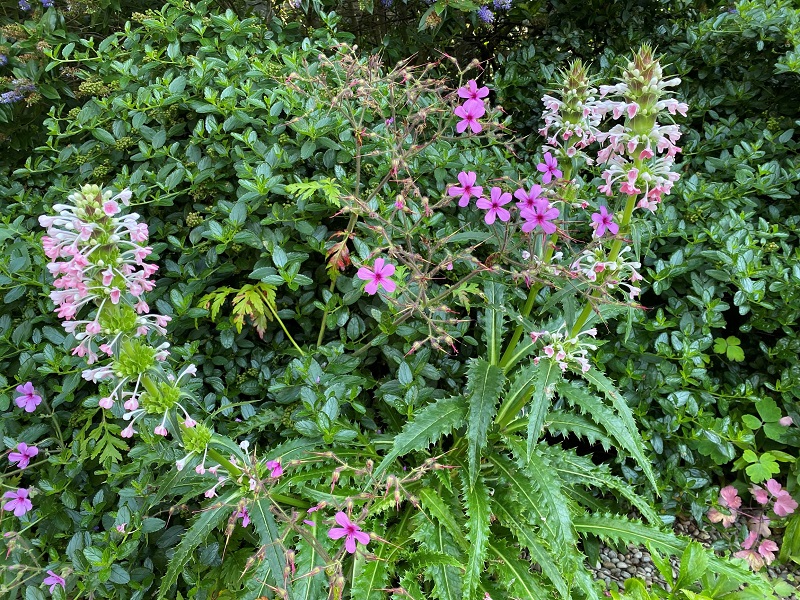
The water lilies on our pond have long been anonymous. They are gradually creeping across the whole surface, leaving a smaller and smaller area for the duck weed. They only open their flowers when it is sunny and these usually perfect flowers start quite deep pink and get paler as they age.
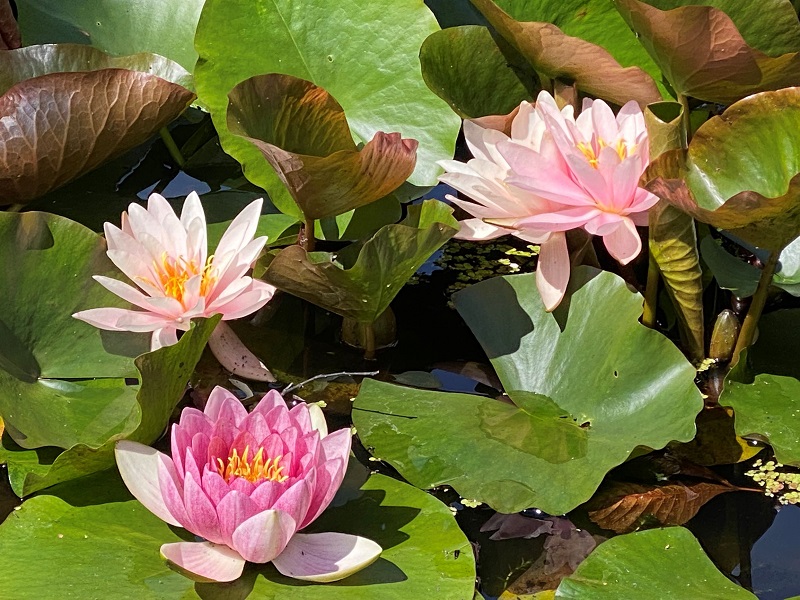
A contrast in habit to most other plants is Dierama pulcherrimum for its flower stems always arc gracefully downwards like this and it is easy to see why it is known as Angel’s Fishing Rod. This is a self-seeded clump, in theory hanging over the channel leading to the pond, but the rods wave around in the wind well above the water with no chance of any catches.
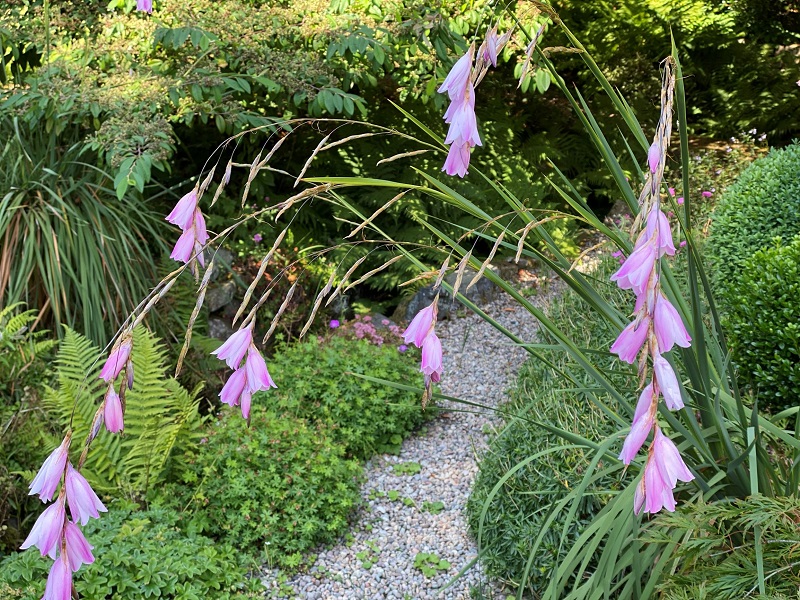
Anna Buxton
2nd August 2021
All pictures taken recently at Redcroft






